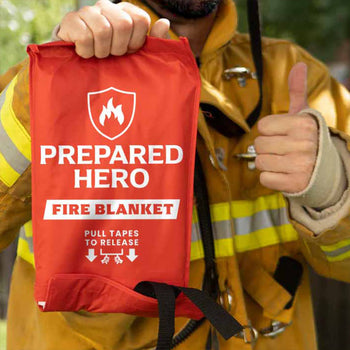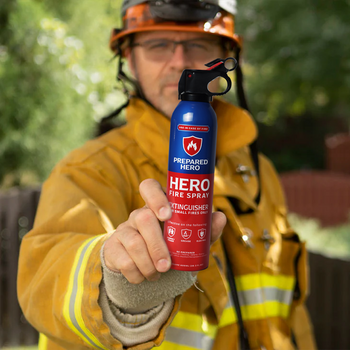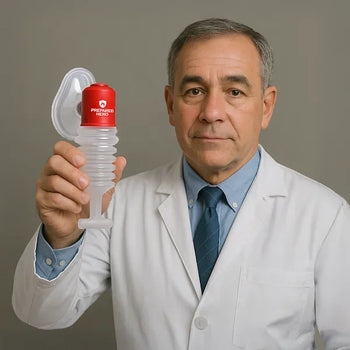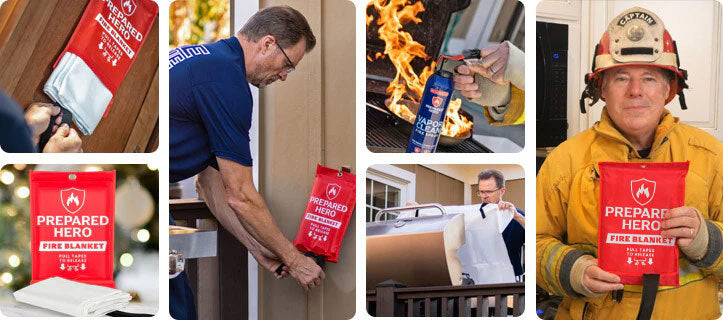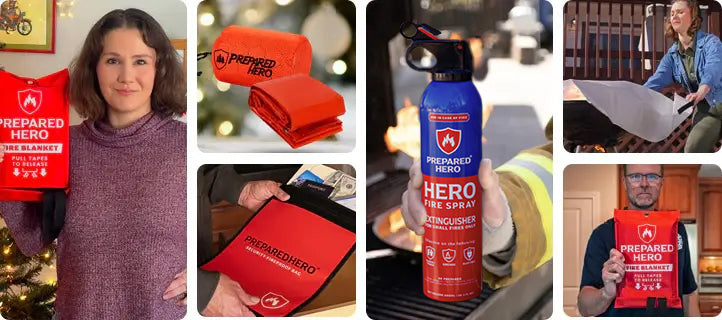Where you put your smoke detectors matters just as much as installing them. Proper placement makes sure they can detect...
Ever wonder if the oil in your kitchen or garage can catch fire? You’re not alone. From vegetable oil to motor oil, different oils react differently to heat, and some can be serious fire risks if you’re not careful. In this guide, we’ll talk about whether oil is flammable or not, when it burns, and how to stay safe.
Is Vegetable Oil Flammable?

Vegetable oil might seem harmless, but once it heats up, things can get risky. Technically, vegetable oil isn’t flammable by OSHA (Occupational Safety and Health Administration) and NFPA (National Fire Protection Association) standards.
For a liquid to be classified as flammable, its flash point (the temperature at which it gives off vapors that can ignite) has to be below 100°F (37.8°C). Most vegetable oils don’t hit that mark. In fact, many have flash points around 600°F (315°C), which is much higher.
So no, vegetable oil won’t just burst into flames at room temperature or even while simmering on low heat. But that doesn’t mean it’s totally safe. If it gets hot enough, like during deep frying, it can still catch fire. Once it hits that flash point and vapors form, all it takes is a spark or open flame.
The type of vegetable oil also matters. Olive, canola, and coconut oil have different flash points. That’s why it’s smart to never leave hot oil unattended in the kitchen. It’s not flammable in the usual sense, but under the right conditions, it can definitely burn. Find out more about flammability and combustibility here.
Flashpoints of Common Vegetable Oils

Here are the flashpoints of common vegetable oils:
| Cooking Oil | Flashpoint |
| Olive Oil | 410°F |
| Coconut Oil | 563°F |
| Flaxseed Oil | 600°F |
| Safflower Oil | 600°F |
| Sesame Oil | 600°F |
| Cottonseed Oil | 606°F |
| Sunflower Oil | 607°F |
| Palm Oil | 615°F |
| Rice Bran Oil | 615°F |
| Corn Oil | 617°F |
| Canola Oil | 619°F |
| Soybean Oil | 626°F |
| Peanut Oil | 633°F |
Is Olive Oil Flammable?
Olive oil isn’t flammable in the way people usually think, but it can still catch fire. Technically, it’s combustible, not flammable. The difference comes down to temperature. According to safety standards, a liquid is flammable if its flash point is below 100°F (37.8°C). Olive oil has a much higher flash point of around 410°F (210°C), so it doesn’t qualify.
Still, that doesn’t mean you’re totally in the clear. If olive oil gets hot enough, it will start to smoke. And if you keep heating it past that point, the vapors it gives off can catch fire. That’s how grease fires happen. This is more likely when you’re frying or using high heat and step away from the stove.
There’s also a rare risk of spontaneous combustion. If a rag soaked in olive oil is left exposed to air, it can oxidise and heat up enough to ignite on its own.
So, no, olive oil isn’t flammable. However, it’s combustible and can catch fire. Always watch your pan, don’t overheat your oil, and store oil-soaked rags safely. A little caution goes a long way in the kitchen.
Other Common Flammable Kitchen Ingredients

Some kitchen ingredients seem harmless but can actually catch fire under the right conditions. From flour to spices, everyday items can pose a risk if you're not careful. Check out if these common ingredients are flammable or not.
Flour
Flour is flammable, but not in the way you might think. The flour sitting in your pantry won’t just burst into flames. The real danger happens when flour becomes a fine dust cloud in the air. That’s because flour is full of starch, which is a carbohydrate that burns easily. When ground into a fine powder, flour has a lot of surface area exposed to oxygen, which makes it easier to ignite.
If flour dust is floating in the air and mixes with oxygen, a spark or heat source can set it off. Once one particle catches fire, others follow. This can lead to a quick and powerful fire or an explosion in extreme cases.
This is why flour dust is a real hazard in food factories and mills. However, you’re safe at home unless flour gets airborne near an open flame.
Sugar
Sugar is flammable, especially in powdered or dusty form. Like flour, sugar is a carbohydrate that can burn when heated to around 350°F (177°C). In its regular granulated form, sugar isn’t much of a fire risk.
But when sugar dust floats in the air, like in a factory or enclosed space, it can ignite and even explode if there’s a spark. This happens because the fine particles mix easily with oxygen, making them more likely to catch fire. So while sugar is safe on your counter, be extra careful with sugar dust near heat or flames.
Butter
Butter is also flammable, but not right out of the fridge. It has a low smoke point (around 350°F or 177°C), so when it’s heated too much, it can start smoking and eventually catch fire. Butter is mostly fat, and its milk solids burn quickly when overheated. That’s why it’s easy to accidentally start a grease fire if you leave it in a hot pan too long. So, while butter won’t burst into flames on its own, it can definitely ignite if you’re not careful while cooking.
Alcohol-Based Cooking Sauces
Alcohol-based cooking sauces like Marsala, sherry, or wine sauces are flammable. Even though they only contain small amounts of alcohol, that’s enough to create flammable vapors. Alcohol has a low flash point, so it can ignite easily when exposed to heat or flame. When you pour these sauces into a hot pan, the alcohol can vaporize and flare up if there's an ignition source nearby. This can be risky in kitchens, especially around open flames. You should also never leave bottles near heat. If they get hot enough, they could explode. Always handle alcohol-based sauces with care while cooking to avoid accidents.
Seasoning
Some seasonings can be flammable, especially in powdered or oily forms. Spices like cinnamon, chili powder, and garlic powder can catch fire when exposed to high heat or open flames.
For instance, cinnamon contains flammable compounds like cinnamaldehyde and eugenol. When cinnamon dust floats in the air near a flame, it can even cause a small explosion, similar to flour. Garlic burns fast because of its oil content, which can cause splattering and flare-ups in hot pans. Stay safe by cooking spices over low to medium heat and keep powdered seasonings away from flames or hot burners.
Milk
Liquid milk isn’t flammable. It’s mostly water, so it doesn’t burn easily and can even help cool a fire. But don’t pour it on oil or electrical fires because it can make things worse. On the other hand, powdered milk is a different story. When it’s in dust form and suspended in the air, it can ignite and even explode under the right conditions. The fine particles have more surface area and can catch fire fast. That’s why powdered milk can be a hazard in factories, especially if it builds up near heat or sparks.
How to Prevent Kitchen Fires

Kitchen fires are one of the most common causes of house fires, but the good news is they’re also easy to prevent. Here’s how to keep your cooking space safe:
1. Stay in the Kitchen While Cooking
Unattended cooking is the number one cause of kitchen fires. If you're frying, grilling, or broiling, stay close. If you need to leave (even for a minute), turn off the heat source or ask someone to watch it for you.
2. Keep the Kitchen Clean
Grease and food buildup can catch fire fast. Wipe down the stove, oven, and counters after each use. Regularly clean range hoods and filters to prevent grease accumulation. This is also one of the top three things you can do to prevent fires at home.
3. Turn Pot Handles Inward
Always turn handles toward the back of the stove. This prevents anyone from accidentally knocking over a hot pot, especially important if you have kids.
4. Keep Flammable Items Away from Heat
Paper towels, oven mittens, wooden utensils, and food packaging can all catch fire if left too close to a burner. Store them safely away from the stovetop.
5. Don’t Overheat Cooking Oil
Oil can catch fire once it reaches its flash point. Use a thermometer if you're deep-frying, and never walk away from heating oil.
6. Use a Fire Blanket or Fire Spray
If a grease fire starts, don’t use water. Cover the pan with a fire blanket and turn off the heat. You can also use a fire spray or extinguisher to safely put out the fire.
7. Keep Kids and Pets Out of the Kitchen
Set up a "no-go" zone around the stove. Curious hands or paws can accidentally cause spills or knock over hot pans.
How to Put Out a Grease Fire

A grease fire on the stove can get out of control fast, but you can stop it safely if you act quickly and stay calm. Here’s how to put it out properly:
1. Turn Off the Heat
If it’s saf, turn off the burner right away. This cuts off the heat and helps stop the fire from growing. Don’t try to move the pan because hot oil can splash and spread the flames.
2. Cover the Flames
Grab a fire blanket and gently place it over the pan to smother the flames. This blocks oxygen, which a fire needs to keep burning based on the fire triangle. Leave it covered until everything cools down.
3. Use a Fire Spray or Fire Extinguisher
If covering it isn’t an option, use a kitchen fire extinguisher or fire spray. Aim at the base of the fire. If you’re using a fire extinguisher, use Class K. This class of fire extinguisher is made for grease fires in the kitchen.
4. Never Use Water
Water and hot oil don’t mix. It can cause the fire to flare up and spread instantly.
5. Evacuate If Needed
If the fire keeps growing or you feel unsafe, get everyone out and call 911. Your safety comes first.
Can Spilled Oil Cause a Fire?

Yes, spilled oil, whether it’s cooking oil, motor oil, or lubricant oil, can cause a fire under the right conditions. Many people don’t realise the risk, but even small spills inside the home can be dangerous.
Cooking oil is combustible. It won’t catch fire at room temperature. However, it can ignite if it spills near a heat source like a stove or oven. This is how many kitchen fires start: someone walks away from a hot pan, and the oil reaches its flash point.
Motor oil and lubricant oil are also fire hazards. They’re often found in attached garages, detached garages, or sheds.
If spilled near heaters, engines, or tools that spark, they can catch fire. On top of that, oil-soaked rags left in the open can spontaneously combust over time as the oil oxidizes. Spilled oil also releases fumes that may affect indoor air and cause health problems. It can even seep into floors and walls, leading to long-term damage.
If you spill oil indoors, turn off heat sources, ventilate the area, and clean it up properly. For large spills, it’s best to call a professional cleanup crew to handle it safely.
Can Oil Fumes Ignite?
Yes, oil fumes can ignite if the conditions are right. It’s not usually the liquid oil that catches fire. It’s the vapors that build up when oil gets hot. Once those vapors reach a certain temperature, called the flash point, all they need is a spark or flame to ignite.
Motor oil isn’t flammable at room temperature, but it’s combustible. Its vapors can catch fire if heated to around 250°F to 450°F. If motor oil leaks onto something hot, like an exhaust manifold, those fumes could ignite.
Vegetable oil works the same way. When heated past its smoke point, it starts releasing flammable vapors. That’s why kitchen fires can happen if oil is left unattended on the stove. Even rags soaked in oil can spontaneously combust if left in the open air.
To stay safe, always seal oil containers, store rags properly, and keep oils away from heat or flames.
Is Diesel Flammable?

No, diesel is not flammable in the way gasoline is, but that doesn’t mean it’s totally safe. Diesel is actually combustible, not flammable. That’s because it has a higher flash point, usually above 100°F (37.8°C). A flash point is the temperature at which a liquid gives off enough vapor to catch fire. Gasoline, by comparison, has a much lower flash point, which is why it ignites easily, even at room temperature.
Diesel also needs more heat to produce vapor that can ignite. It won’t catch fire from a small spark or flame like gasoline might, but if it gets hot enough, it can burn. The National Fire Protection Association (NFPA) classifies diesel as a Class II combustible liquid, which means it’s safer than flammable liquids but still requires caution.
Spilled diesel might not seem dangerous right away, but it becomes risky if it builds up near heat sources. Plus, it’s the vapors, not the liquid, that burn.
So, while diesel isn’t technically flammable under OSHA rules, you should still store and handle it carefully. Keep it in approved containers, away from sparks and heat, and clean up spills fast. It's not explosive, but it’s not harmless either.
Is Motor Oil Flammable?
Motor oil isn’t flammable, but it is combustible. That means it won’t catch fire easily at low temperatures, but it can still burn if it gets hot enough. Its flash point is about 250°F to 450°F (121°C to 232°C). Hence, it needs way more heat than gasoline to burn.
Because of this, the NFPA classifies motor oil as a Class IIIB combustible liquid. It’s not super volatile, but it can still be a fire risk if spilled onto hot engine parts or left near high heat sources.
You won’t see motor oil burst into flames from a spark at room temperature. But if it leaks onto something like an exhaust manifold, which gets really hot, it can ignite. Also, it’s not the liquid that burns, it's the vapors coming off it once it’s hot.
So, while motor oil is safer than gasoline, you still need to be careful. Clean up spills, store it properly, and keep it away from extreme heat or flames.
Conclusion
Just because most oils aren’t labeled flammable doesn’t mean they can’t catch fire. With enough heat, many can still ignite and cause real damage. The key is handling them with care. Don’t overheat them, store them properly, and clean up spills fast. Whether you’re cooking dinner or topping off your engine, staying alert around oil helps keep fires from starting in the first place.
Do you want reliable, easy-to-use, and affordable tools to put out small fires before they spread? Check out Prepared Hero’s fire prevention tools here, and get up to 51% off on certain items. Stay prepared, hero!


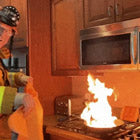 Fire
Fire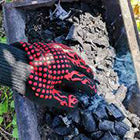 Safety
Safety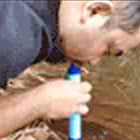 Survival
Survival Protection
Protection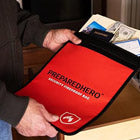 New
New
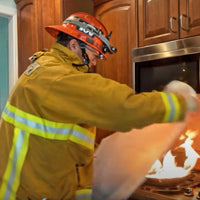 Fire
Fire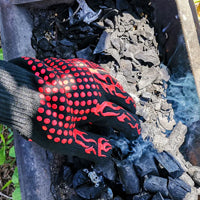 Safety
Safety Survival
Survival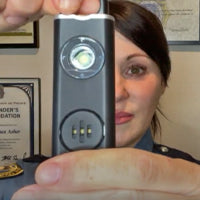 Protection
Protection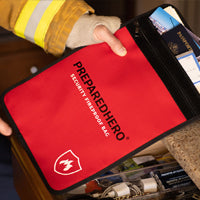 New
New
